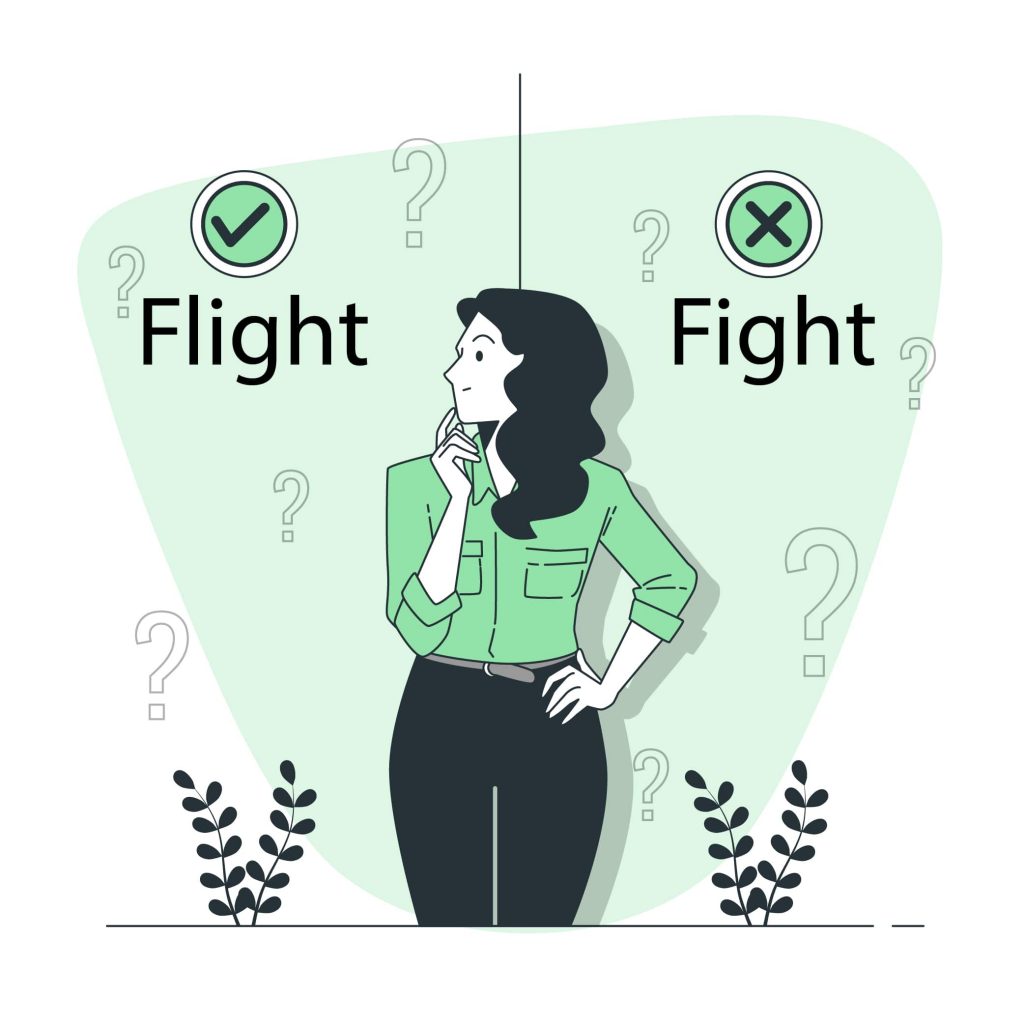Dealing with Flight or Fight
It’s natural to feel guarded when you’re about to meet people for the first time. You’re unsure of whether they’ll accept you in their circle. You hesitate to approach them and may only introduce yourself if they do so first. It’s your fear of rejection at work.

You’ve heard of “flight or fight“ responses. These are automatic reactions when people face threats. They experience shortness of breath, an increased heart rate and sudden stomach pain.
Sounds familiar?
The amygdala activates responses in the human brain when people face physical danger. It protected the first humans against the elements and predators. Walking down the street, you might not be worried by a hungry bear today. But indeed, you get concerned when an out-of-control vehicle approaches you. When the latter happens, you instinctively get out of the way. When a person experiences stage fright before speaking to an audience or a group, you might be surprised to learn that there may be a connection to the amygdala.
Early humans needed to belong to a group to survive. Rejection then could have meant a high probability of death. Studies have shown that the amygdala retains the idea that a rebuff is a threat. Now you know why you won’t just introduce yourself to anybody. It’s not always because of a lack of confidence.
- Real versus Perceived Dangers

Experience may play a role in why people have fears. Examples are public speaking and socializing. These can be stressful events that can trigger the flight or fight responses even when there are no threats to one’s life. Many of your responses to challenging situations may not be rational in hindsight.
Instead, these were the result of your instinct to remain physically safe. The amygdala can block rational brain functions, especially when people are unaware of this. For instance, not knowing why your boss wants to talk to you might cause you to avoid or delay.
But, if you pause for a moment and discover why the hesitancy, you might realize that your brain is exaggerating the situation and that there’s no real threat to your life.
- Take Deep Breaths
Counting to ten before reacting or responding to a stressful situation gives the rational part of your brain time to process information. And take at least three deep breaths to lower your heart rate and relax your muscles.
Knowing more about your brain, you can avoid overreacting and making rash decisions. When you face threats, you’ll discover most are not that serious.



